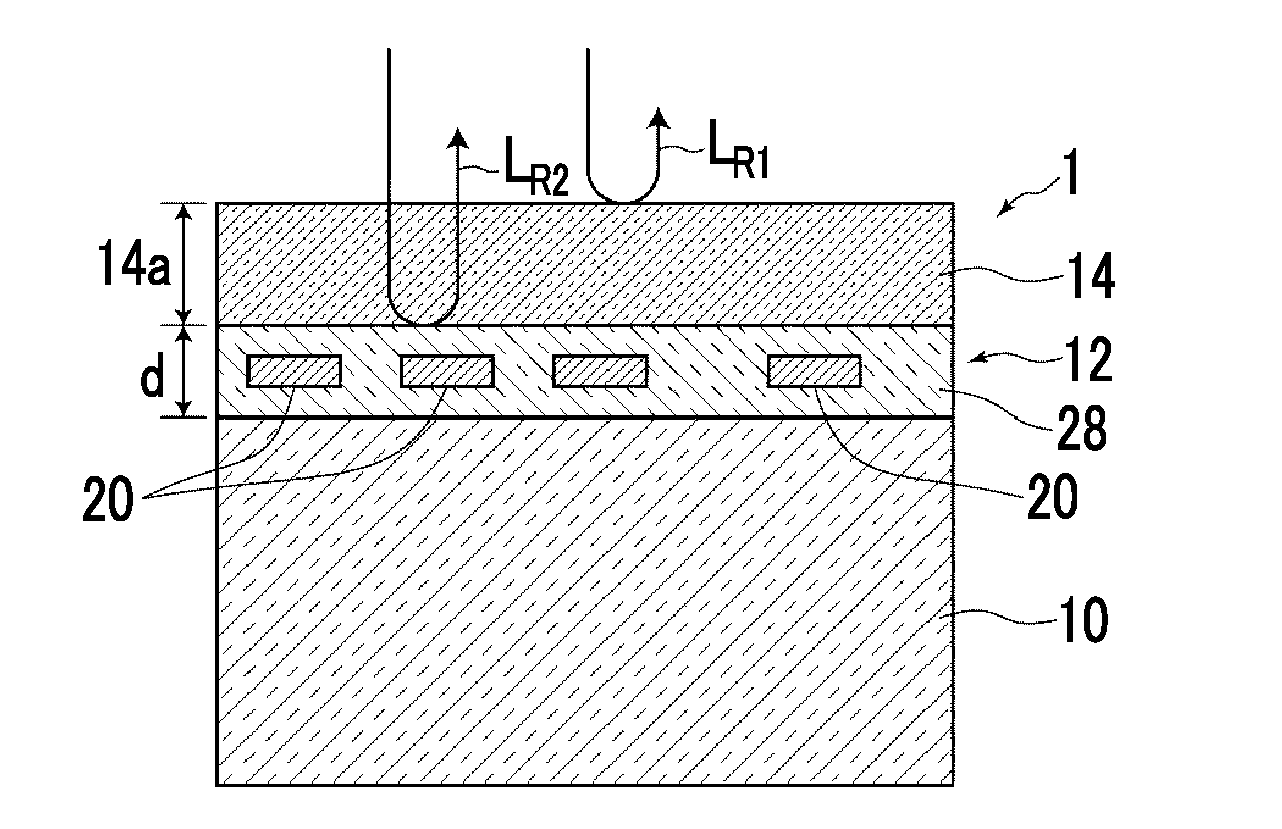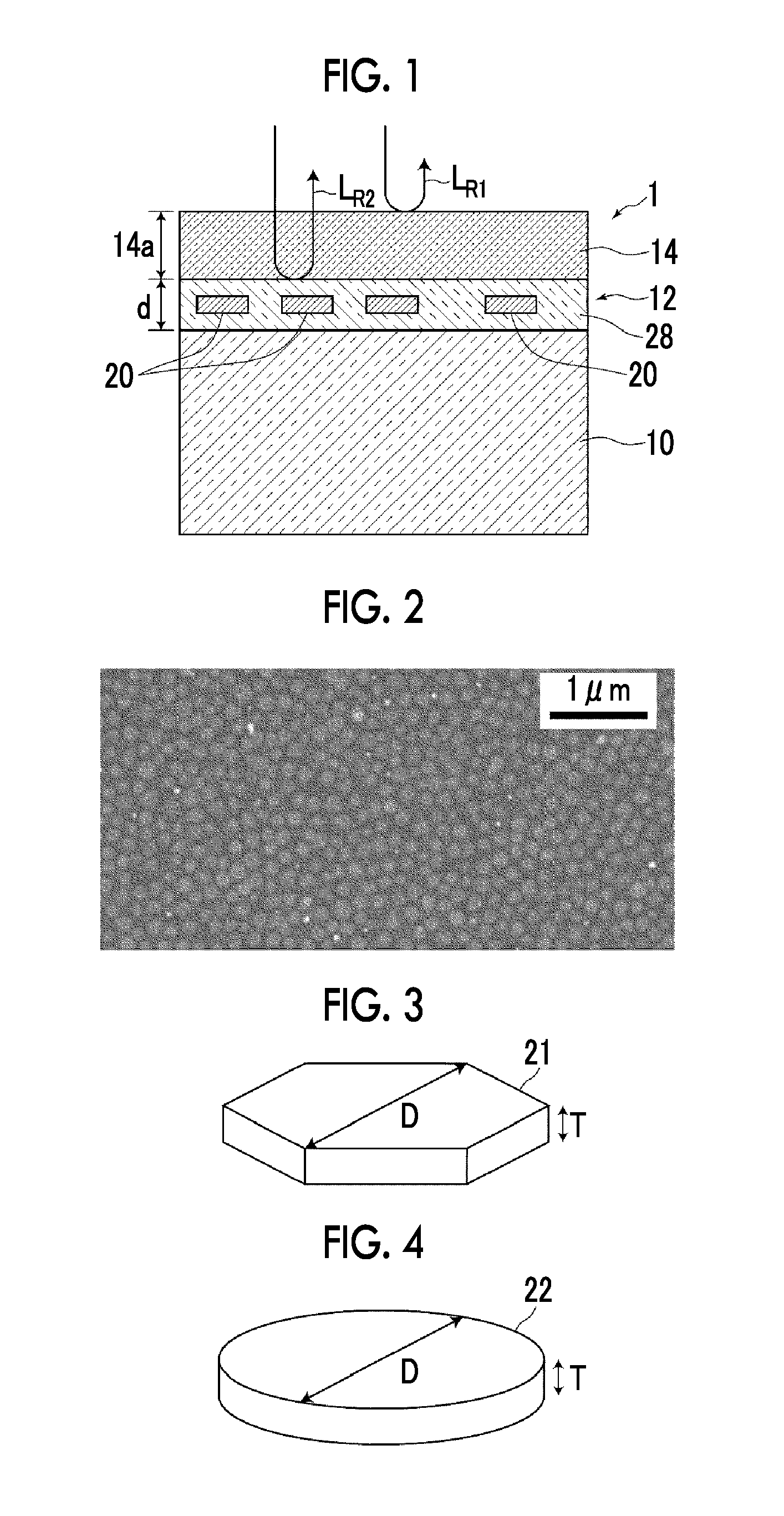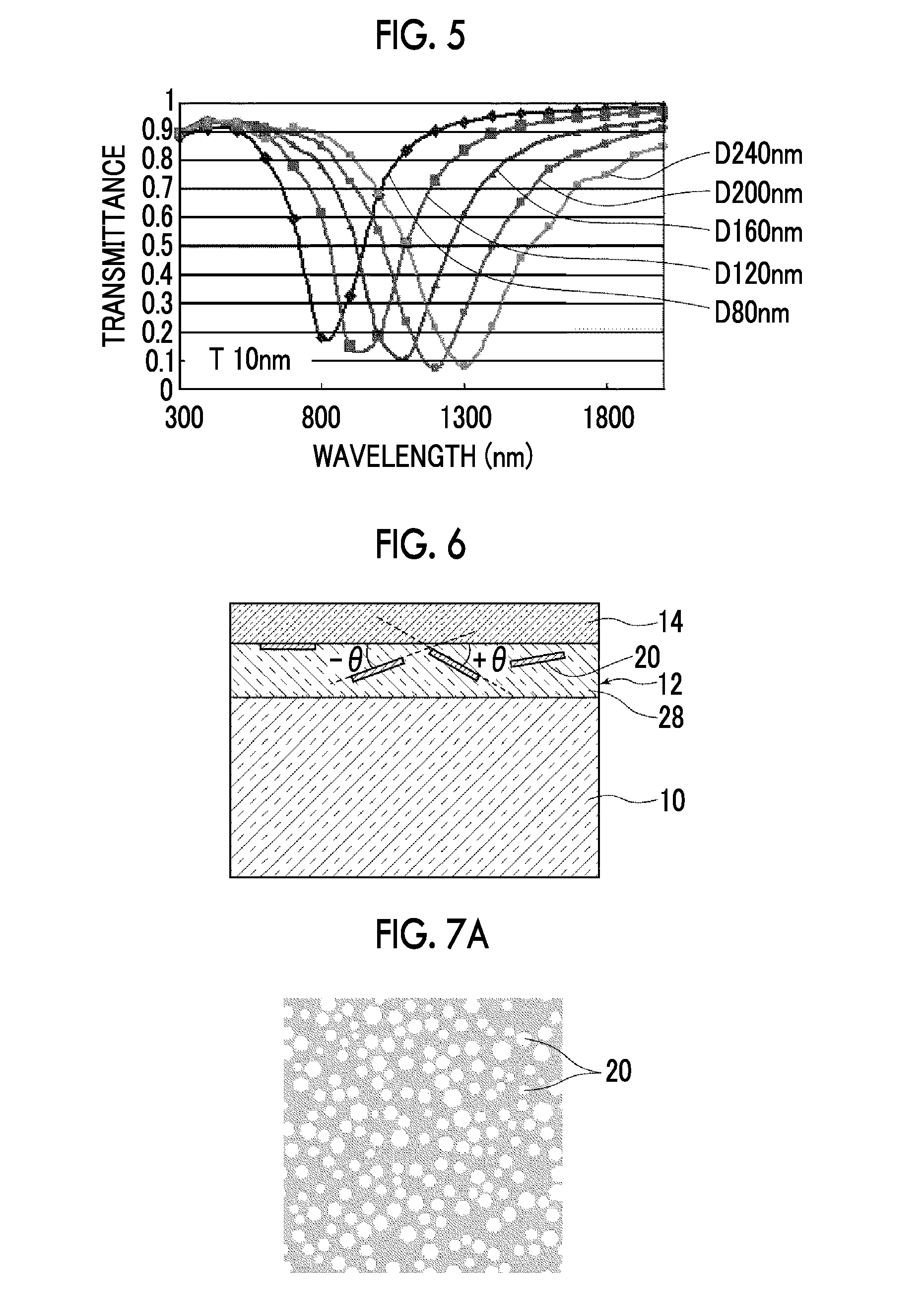Anti-reflection optical member
- Summary
- Abstract
- Description
- Claims
- Application Information
AI Technical Summary
Benefits of technology
Problems solved by technology
Method used
Image
Examples
example 1
[0186]The application liquid C1A for the metal-microparticle-containing layer was applied on a surface of a TAC film (FUJITAC, 80 μm, and a refractive index of 1.5) such that an average thickness thereof after drying thereof was 20 nm, by using a wire bar. Thereafter, the liquid was heated, dried, and solidified at 130° C. for one minute, and the metal-microparticle-containing layer was formed. The application liquid D1 for the dielectric layer is applied on the formed metal-microparticle-containing layer such that an average thickness thereof after drying thereof was 60 nm, by using the wire bar. Subsequently, the liquid was heated, dried, and solidified at 130° C. for one minute, and the anti-reflection optical member of Example 1 was obtained.
example 7
[0188]In Example 7, an anti-reflection optical member having a layer configuration, in which the high-refractive index layer 14 shown in FIG. 10 was provided, was produced.
[0189]The application liquid E1 for the high-refractive index layer was applied on the surface of the TAC film (FUJITAC, 80 μm, and the refractive index of 1.5) such that an average thickness thereof after drying thereof was 55 nm, by using the wire bar. Then, the application liquid C1A for the metal-microparticle-containing layer was applied such that an average thickness thereof after drying thereof was 10 nm, by using a wire bar. Thereafter, the liquid was heated, dried, and solidified at 130° C. for one minute, and the metal-microparticle-containing layer was formed. The application liquid D1 for the dielectric layer is applied on the formed metal-microparticle-containing layer such that an average thickness thereof after drying thereof was 70 nm, by using the wire bar. Subsequently, the liquid was heated, dri...
PUM
| Property | Measurement | Unit |
|---|---|---|
| Fraction | aaaaa | aaaaa |
| Fraction | aaaaa | aaaaa |
| Fraction | aaaaa | aaaaa |
Abstract
Description
Claims
Application Information
 Login to View More
Login to View More - R&D
- Intellectual Property
- Life Sciences
- Materials
- Tech Scout
- Unparalleled Data Quality
- Higher Quality Content
- 60% Fewer Hallucinations
Browse by: Latest US Patents, China's latest patents, Technical Efficacy Thesaurus, Application Domain, Technology Topic, Popular Technical Reports.
© 2025 PatSnap. All rights reserved.Legal|Privacy policy|Modern Slavery Act Transparency Statement|Sitemap|About US| Contact US: help@patsnap.com



